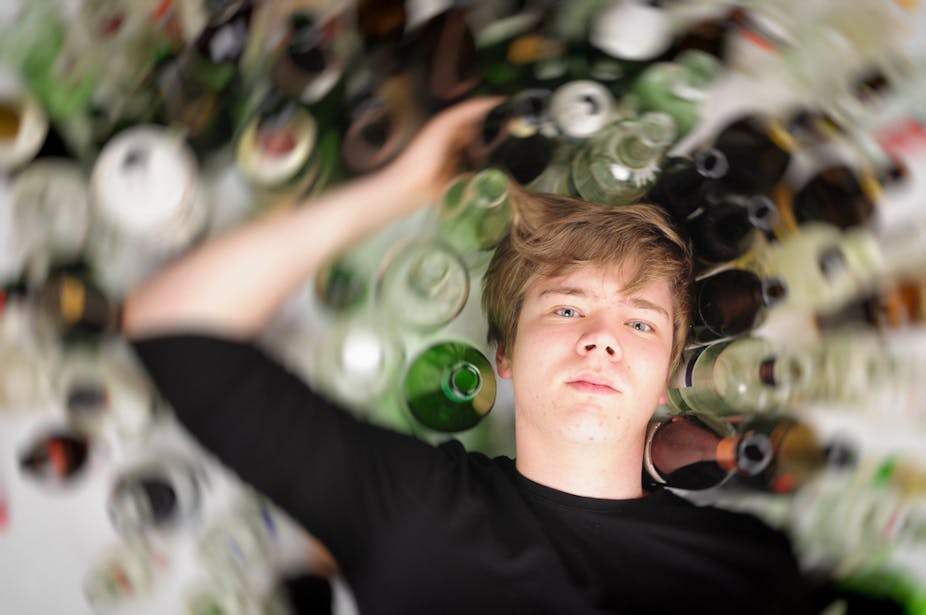We are a nation steeped in alcohol; it’s arguably Britain’s favourite drug, and its use is not without consequence and cost to our health and our wealth. These effects are felt at both a national and personal level – and excessive alcohol consumption is related to accidents, assaults and injuries.
When we hurt ourselves we are likely to end up visiting the hospital. Turn up at your local Accident and Emergency (A&E) departments and chances are you will have a long wait to be seen and, with up to 40% of attendances alcohol related, either you or the person next to you may be there because of drink.
A number of recent media articles have drawn attention to the link between alcohol consumption and hospital admissions – and some go as far as suggesting that increases in drinking and subsequent A&E visits by young people are starting to overwhelm the system. While changes in patterns of alcohol consumption among the under-18s are of concern, it’s time to set the record straight and demonstrate just how much of the current crisis is related to alcohol and youths.
A&Es are busier than ever before. The latest statistics show that over the past five years there has been an increase in the total number of people coming into A&Es. These have gone up by more than two-thirds from 12.3m in 2007-8 to 18.3m in 2012-13. However the number of under-18s has remained fairly constant over the same period. In fact, there has been a slight reduction in the number in this group coming in over the past three years.

The latest statistics show that the majority of men (64%) and women (52%) in England do drink – and of these more than half drink over the recommended limits. Alcohol consumption is far more common in adults than in young people. As we get older we tend to drink more often, with almost a quarter of over-65s consuming alcohol on at least five days a week.

This level of consumption is likely to lead to physical or psychological harms, and is related to A&E attendance. Our most recent estimate of the proportion of adults coming in to the A&E who are hazardous drinkers is 40%. That’s about 5.5m patients last year (and that’s just in England). Unfortunately there is a lack of quality research exploring alcohol-related presentations among under-18s. However, a recent parliamentary question yielded some interesting data: during 2009-10 (in English A&Es) there were 12,831 alcohol-related presentations in this age range (0.6% of all under-18s); in 2010-11, 12,352 (0.6%); and in 2011-12, 11,306 (0.5%). This is a relatively small proportion – and one that is shrinking over time. And, compared to overall alcohol-related presentations, it’s a drop in the ocean (0.07% in 2012-13).
A BBC News report in 2013 proclaimed as “alarming” the number of children under 11 who had been admitted to the A&E after “drinking too much.” In fact the statistics showed that 300 cases in the UK had been identified – less than 0.01% of all presentations for that age group. To further complicate matters, it seems that the figures obtained did in fact include any child who had a mention of alcohol in their medical notes. So these numbers include cases where someone like an assailant or driver had drunk alcohol, and not the child themselves.
The problem is that we don’t have very reliable data on the drinking habits of children who come into emergency departments. We know there are a number of different approaches that could help to reduce consumption, or prevent or delay the onset of drinking among young people. However there are no official recommendations yet as to what approach should be adopted in the A&E. Encouragingly many A&Es now actively screen and intervene with adult attendees, but only one in ten do so routinely with under-18s.
What we do know is that fewer children (under the age of 16) are drinking. There has been almost a two thirds reduction in those reporting that they have “ever drank” alcohol, from 61% (in 2003) to 43% (in 2012).
Fewer people but drinking more
Interestingly, however, the number of units per week of alcohol consumed has increased in recent years. Lower numbers of young people are drinking increasing amounts of alcohol. This trend towards non-drinking was explored in a Channel 4 News item that suggested that now up to a quarter of all 16 to 30-year-olds never consume alcohol.

So excessive alcohol consumption remains an issue for under-18s, but with less young people drinking more alcohol than ever before, the burden on the already overstretched A&Es will remain. However the bigger picture suggests that it’s the overall consumption of alcohol by all age groups that may be helping drive up the A&E presentations rather than young people’s drinking. So we need to address this as a matter of priority. Children’s alcohol consumption might make for an impressive headline, but the truth is a little closer to home than we may like to think.
Hard Evidence is a series of articles in which academics use research evidence to tackle the trickiest public policy questions.

